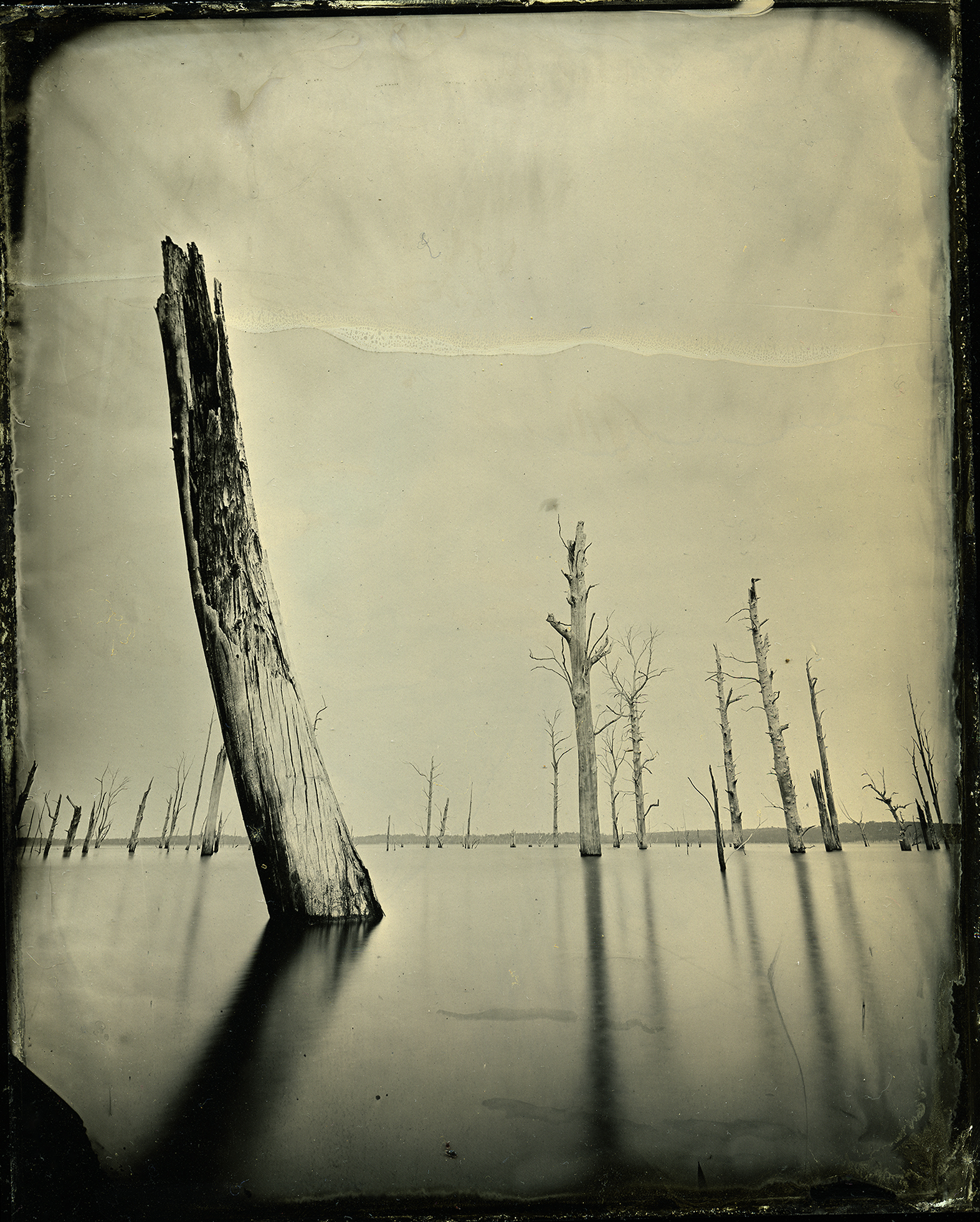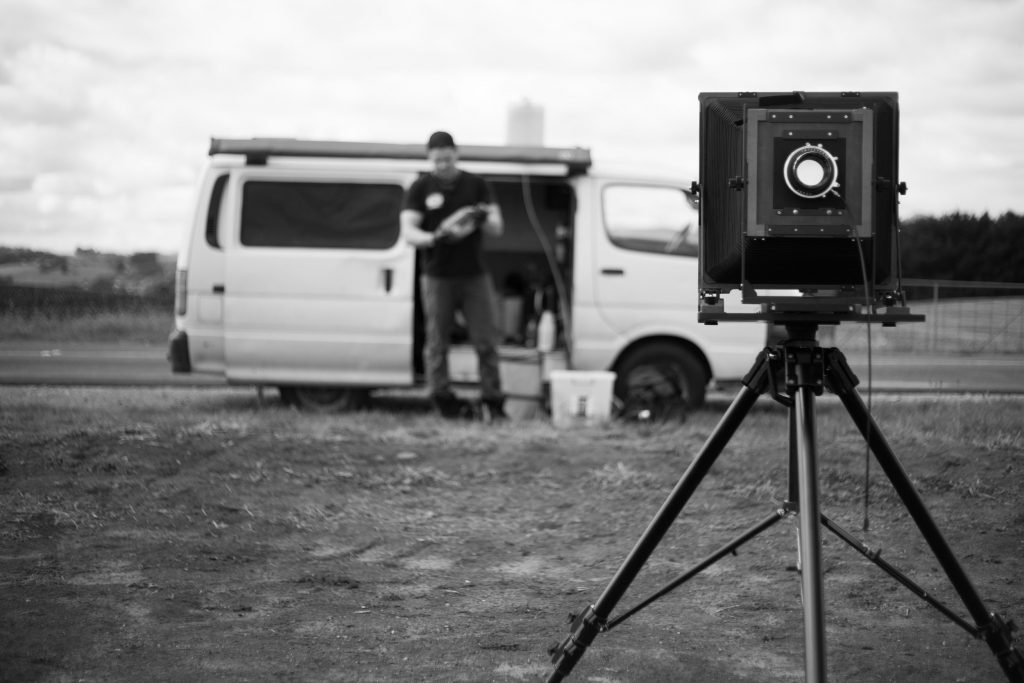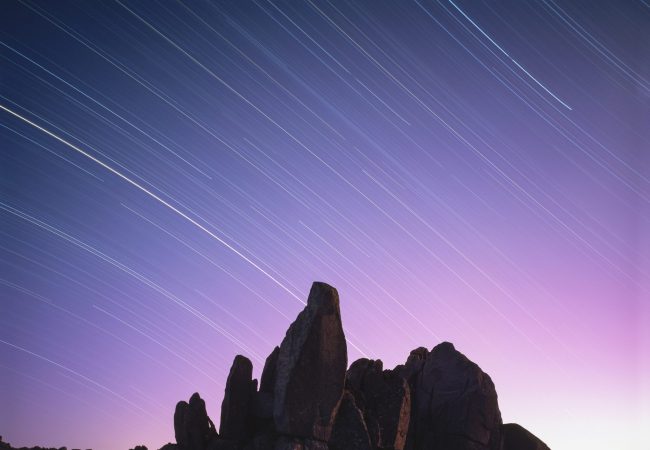Aries Tor. Snowy Mountains, Mt Kosciuszko National Park NSW Australia.…

The Photograph Considered number twelve – Alex Gard
Lake Echo. 8×10 black glass ambrotype
This probably isn’t a photographic love story.
This is my second article for David Tatnall’s blogs and things have changed a bit since the last time I wrote.
Around 2014 I saw some incredibly captivating photos by Borut Peterlin and Luther Gerlach in Steve Simmons’ View Camera Magazine using something I’d never heard of before called the ‘wet collodion’ process. I fell in love with the dreaminess of these apparently make-believe landscapes. Trees straight out of a fairy-tale, almost glowing. Luther and Borut’s perfect compositional skills were beautifully complimented by the ethereal signature of the wet collodion aesthetic. Their art really is a perfect match of perspective and process.
Now, that’s all the buzzwords and name-dropping out of the way.
Since 2015 I’ve been shooting wet plate rather sporadically. I taught myself from a few manuals available from various contemporary wet-plate heavyweights doing the Lord’s work bringing archaic 19th century knowledge to the modern world.
Wet plate isn’t a particularly easy thing to do in the wild. Nor is it cheap. Actually, it’s expensive as hell for us Australians with collodion creeping towards $400 a litre and silver nitrate certainly isn’t a cheap resource either.
There are plenty of articles out there by artists using this process and I’m sure most large format photographers by now have read at least one contemporary ‘revivalist’ or ‘alchemist’ waxing lyrical with gratuitous fawning over the lingo and apparent exclusivity of the wet plate world so I will spare you the information on the chemical task itself.
Wet plate is not magic, it’s just hard. It requires time, patience and cleanliness. Unfortunately I am not a patient, organised or clean person. These are attributes wet platers or indeed any photographer should definitely have. In hindsight I actually kind of wish I’d chosen something a little less demanding but there’s no turning back now because I’ve trashed my camera gear with chemicals and the resale value would be traumatic.
Being able to do wet plate outdoors was non-negotiable for me because I’ve always really loved driving out into the sparse Tasmanian midlands and make photos of dead or dying trees.
I converted my ’99 Toyota Hiace (originally a camper) into a mobile darkroom by blacking out the interior with black builders plastic and blackout fabric. I bought a big sheet of rubylith sheeting and put it over the sliding door window to create a red light in the back of my van that I could work under.
 Alex Gard outside his mobile darkroom.
Alex Gard outside his mobile darkroom.
The van isn’t very comfortable to work in but it’s functional. It gets the job done. It looks like a rolling crime scene covered in dust and chemical stains with blacked out windows and I’m surprised I don’t get more attention from law enforcement. My friends get good mileage out of the joke of me and my creepy van.
But beneath all my poor organisation skills and scattered approach to everything in my life there was always an underlying draw to the landscape. Everything just kind of serendipitously eventuated to me being out there makin’ photos.
I never felt an inner calm like the first time I was out in the middle of a flat, open field inland from Bothwell in Tasmania’s Southern Midlands in the middle of winter. I was composing an image on my camera and suddenly I was hyper-aware of the total silence around me. No wind, no birds, no traffic, just the sound of my breath under the dark cloth and the condensation forming and fading on the ground glass. That was probably the moment that made me addicted to the whole thing. It kind of feels like you’ve stepped into a time capsule knowing that countless other large format photographers have been dancing the same methodical routine for nearly two hundred years. It sounds cheesy but it feels like something I was meant to do.
Nothing prepared me for actually seeing the sun-bleached white trunk of a dead Silver Gum translated into brilliant silver on an ambrotype. When I first saw one clearing in the fixer tray I felt like I’d struck gold.
The process lends an incredible presence to these haunting dead trees. I feel I’ve etched my own niche by capturing the unique qualities of these silent beacons.
Am I doing this for recognition? What’s the real driving force behind all this? I don’t really have a message or a story I’m trying to push with my photos. It’s just a creative outlet. I’m surrounded by this amazing landscape that aches to be photographed and I feel like the only one who’s had the dumb idea to drive out there in a blacked-out van and do it. Most times I feel like I’m the only one who really appreciates it but usually that’s all I need.
Actually, If anything the whole venture has become less about trying to be a ‘photographer’ and more about just taking time for myself to get away and ‘reset’. I don’t do yoga or go fishing or anything at all really so I guess this has to be it.
Nothing puts me in the moment like spending a whole goddamn hour to make a single photo of a dead tree that I just thought looked cool, with a bunch of dangerous chemicals that I am probably way too dumb to be trusted with.
But to be honest this was all a lot easier when I was working away at sea with lots of spare time and money up my sleeve. Now it’s tricky. I earn a lot less money and I might get one day a week spare if I’m lucky and the weather is right. This year has been really hard, which is why I’ve been hesitant to contribute anything to this blog.
My photographic motivation seems to be disastrously piloted by my overall mental wellbeing. I’ll sometimes go months, even close to a year where I won’t have the mental ability to drag myself out there to take photos. To be frank a bit of turbulence in my love life has probably been the main influencing factor to my lack of my creative energy. Apparently, in my case, emotional stability harbours the urge to make ambrotypes. I can’t make ‘sad art’. Go figure.
If I try to force myself through it I’ll just end up driving aimlessly for hours without any kind of inspiration and I’ll come home empty handed and deflated. I’ve given up on pointing my camera at just anything and relying on the chemical aesthetic to make the photo interesting, which I feel is something a lot of people are going for these days. I’ve always tried to make solid compositions that I’ve felt confident about.
Anyway. I’m hoping all this will pass and things will treble out and I’ll get back into a good flow of producing ambrotypes. It’s a process that I feel has become a part of me, and now that I’ve learned the basics of it it’s something I can go back to and never feel any unfamiliarity. It’s been the thing that’s always instilled the most calm in me. Maybe I just need to remind myself of what it feels like to make magic.
The photograph I have chosen to submit to this article is Lake Echo; it’s an 8×10 inch black glass ambrotype. It was made using my Tachihara 8 x 10 triple extension field view camera fitted with a Nikkor SW 120mm f8 wide-angle lens. To this date it’s still one of my favourite images that I’ve made. It was the very first ambrotype I ever made where I uttered, “yes!” out loud when it cleared in the fixer. Looking at this photo now I am more forgiving of the chemical mistakes I can see.
This photo makes me sad that I sold my Tachihara camera. The 11 x 14 that I use now is great but I miss the ease and portability of the smaller 8 x 10. It’s a much more sensible format for the way I work.
More of Alex’s work can be seen on his website.




Even with that account I don’t think anybody will be put off trying. “Sad art” LOL
Congratulations Alex, great image. Look forward to seeing the 11 x 14 work.
This is GREAT! Alex you should write more! And photograph more….that was poignant like your photos. You got it man!
What a great vision – I have never seen dead trees done so well!
This is such a great image Alex You are a long way from the Midlands though.